CAFRE’s Hill Farm Centre at Glenwherry, Co Antrim, demonstrates how cattle and sheep can play an integral role in protecting, and enhancing, the diverse habitats commonly found on marginal farmland.
As agriculture moves further down the line of environmental sustainability, the core ethos at the CAFRE hill farm has never been more relevant.
Under the correct management, livestock can co-exist alongside fragile conservation sites, areas of scientific interest and breeding sites for endangered wildlife.
But at the same time, hill farms have to provide farmers with a viable income. So there still needs to be a focus on efficient livestock production.
Basically, it comes down to striking the right balance between managing the natural resources of the hill and getting an appropriate level of output.
Farm overview
While the 960ha hill farm carries a suckler herd of 115 spring-calving cows, sheep is the dominant livestock enterprise.
The 1,100 breeding ewe flock is split between 600 Scottish Blackface and 500 crossbred animals.
Blackface ewes are Lanark-type animals. Crossbred ewes are a mix of Blackface, Swaledale and Texel breeds.
Crossbred ewes start lambing in mid-March with Blackface ewes lambing from 1 April. The crossbred flock and the Blackface ewes mated to Texel rams are lambed in doors.
Blackface ewes bred back to Blackface rams are predominantly lambed outdoors apart from those carrying triplets, or ewes which require additional nutrition pre-lambing.
Conservation
Around 60ha of land, which had been in conifer woodland, is being transitioned back to blanket bog by re-wetting.
In addition, 40ha of the farm is designated as a breeding site for waders and curlew.
While the farm is not contracted to schemes for heather management, hill ground is managed to the standards set by such environmental schemes.
Just 5% of the total farm area is classed as improved, or semi-improved grassland. This area is generally used for a two cut silage system to provide winter fodder.

The farm runs 1,100 ewes alongside 115 spring cows. Both enterprises are run with minimal inputs and used to enhance the land and manage habitats.
Technology
Although the sheep enterprise is generally run as an extensive, low-input system, the flock still makes use of the latest technologies and research.
All sheep are EID-tagged at birth, with every aspect of animal performance recorded on a farm software programme, as well as animal parentage.
Lambs are weighed at birth, eight weeks and 20 weeks of age. The eight-week weight reflects the milking ability of ewes, while the 20-week weight reflects the growth traits health and nutritional management.
Flock sires are chosen using estimated breeding values (EBVs) and in recent years, a comprehensive health plan was introduced to scan for ovine pulmonary adenocarcinoma (OPA) or Jaagsiekte.
Increasing output with hill sheep
The sheep enterprise is split between hill and upland flocks to make best use of the grazing resources available.
The pure Blackface ewes manage over 400ha of rough moorland and heather on the harder hill ground, while the upland ewes maximise output on the lower hill slopes where natural grasses dominate.
Pure Blackface ewes are performance recorded through Signet. Ewes with high EBVs for litter size and maternal traits are retained as flock replacements.
Focusing on these traits has seen scanning and weaning percentages slowly increasing. Scanning results during spring 2021 were 180% in the crossbred ewes.
The Blackface cross ewes served to Texel rams scanned at 176%. Pure Blackface ewes scanned at 154% this spring, well ahead of the five-year average of 145%.
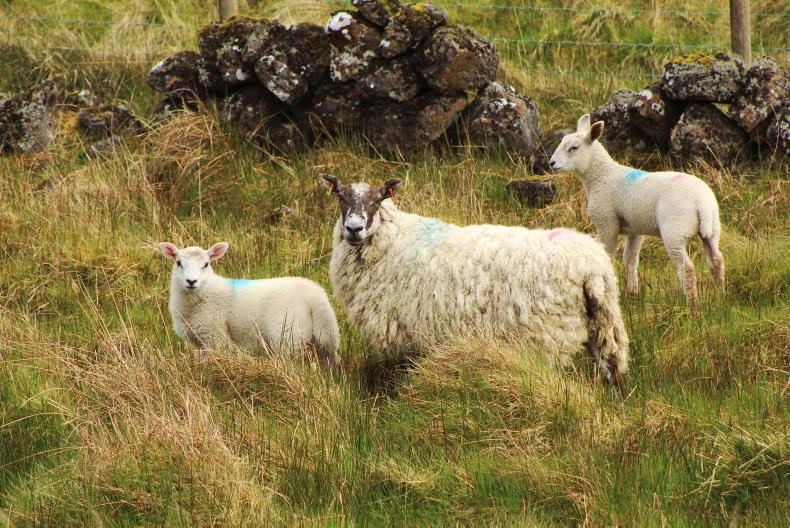
The sheep are split between a pure flock of Scottish Blackface ewes that graze rough moorland and an upland flock of crossbred ewes that maintain the green hill.
Maternal traits
“The increase in scanning results stems from a combination of hybrid vigour through crossbreeding and selecting the best genetics from performance recorded ewes,” said CAFRE sheep technologist, Dr Eileen McCloskey.
“The objective for the hill flock is to primarily produce top-quality replacements that can perform in the hill environment.
“Secondly, we also need to produce a good quality store lamb. Stores are transferred to CAFRE’s lowland beef and dairy units for grass finishing by Christmas.
“Selecting replacements from the best maternal ewes is delivering more lambs on the ground. We have also worked hard at reducing barren rates with less than 5% of the flock scanning empty.”
Flock targets
Output for the entire flock is to wean 0.7kg of lamb for every 1kg of ewe liveweight put to the ram.
The pure Blackface ewes have a target of 0.6kg of lamb weaned per 1kg of ewe mated, with the upland flock target set at 0.8kg lamb weaned per 1kg of ewe mated.
Blackface ewes typically weigh 55kg to 60kg, while mature crossbred ewes are more typically 65kg.
Mature ewe weight is continually monitored and factored in to the selection policy when choosing replacements.
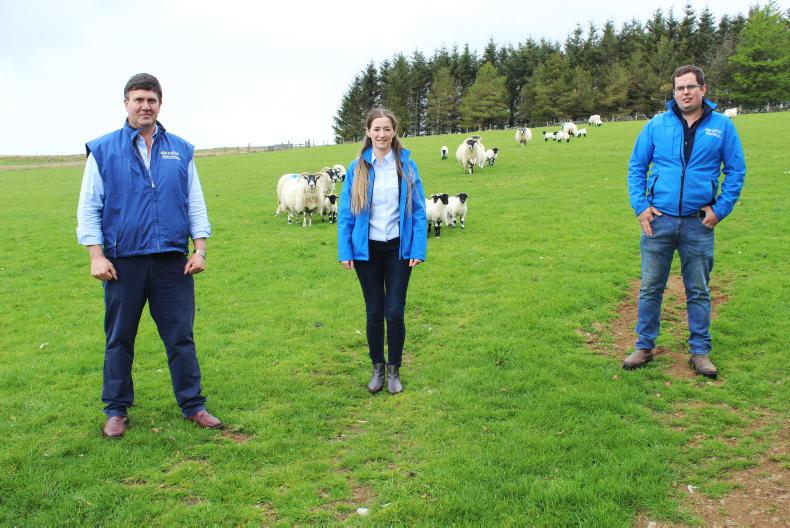
CAFRE farm manager Michael Graham and sheep technologist Dr Eileen McCloskey.
More twins
While a high scanning rate is desired, it is far more important to convert this figure into lambs born and weaned every year as this is actual output.
But while more lambs increase output per ewe and per hectare farmed, there is a limit to what can be managed sustainably on a hill farm.
Challenge
“Scanning above 175% would be unsustainable on this farm. It is a hard hill that is very exposed. Too many lambs can cause management problems in this kind of farming environment” added CAFRE farm manager, Michael Graham.
Low-input production
Sustainable farming should mean that livestock numbers are matched to what the land can naturally support.
In the case of the CAFRE hill farm, purchased inputs are kept to a minimum.
Ewes go to grass within a few days of lambing and stay on the hill until housing in January.
Purchased concentrate is only used during the four- to six-week period prior to lambing. Feeding rates vary depending on silage quality.
No concentrate is offered to ewes, or lambs, at any stage whilst these animals are grazing on the hill.
“We manage the farm to provide grass for ewes throughout the year. We want hardy ewes that can convert low-quality grass into milk that drives weight gain in lambs,” states Dr Eileen.
“Lambs in the upland flock are weaned by mid July with Blackface lambs weaned around the end of the same month.
“We tend to wean a bit earlier than commercial hill farms and tie it in with other management tasks.
“Lambs will have consumed 50% of their lifetime milk intake by six weeks of age.
“Therefore, by July, grass is driving weight gain more than milk. So there is no real benefit to leaving lambs on the ewes beyond this point.
“Lambs are weaned and moved to better grass on the college’s lowland farms once they come off the ewes,” said Dr Eileen.
Building autumn grass
Another reason for weaning by mid-July is to ease the demand on ewes and allow them to regain body condition.
“It’s a relatively short growing year on the hill. Weaning in mid-July means we can ease grazing demand and start to build grass for autumn and winter grazing,” added farm manager Michael Graham.
Breeding
Ewes and replacement hoggets are mated on the hill with rams going out for four weeks in late October.
Rams are then removed after two breeding cycles to keep the lambing period compact and weed out the less fertile ewes.
Around 250 Blackface ewes are bred pure to Blackface rams with another 150 Blackface ewes mated to Swaledale rams, leaving 200 Blackface X Swaledale ewes to be mated to Texel rams. The 500 crossbred ewes are then mated with Meatlinc and Lleyn rams.
All breeding animals get a mineral bolus prior to tupping. Ewes get a second bolus pre-lambing. Ewes are also vaccinated against enzootic abortion, toxoplasmosis and clostridial diseases.
Using OPA scanning to drive flock output
Since 2017, the sheep flock at the hill farm has been scanned for ovine pulmonary adenocarcinoma(OPA).
It is a disease that goes under the radar on sheep farms, but is prevalent at low levels in most flocks.
Contrary to common opinion, OPA is not confined to hill breeds. There is significant numbers of lowland sheep affected.
OPA is a virus that affects the lungs in sheep, causing cancerous tumours to develop.
Other symptoms include rapid loss of body condition and secondary respiratory issues like pasturella pneumonia.
Due to the more easily identifiable secondary disease symptoms, OPA is often misdiagnosed on sheep farms.
Alert
OPA scanning started at the hill farm as barren rates were an issue, along with a growing problem of thin ewes needing priority grazing.
Scanning was initially carried out twice annually, the first time after weaning and again during mid-pregnancy.
In the first year, 8% of animals were culled with confirmed or suspected OPA.
The hard culling policy has seen OPA incidence and culling rate dropping to 2% in 2020.
Future scanning
Although OPA incidence is no longer at a level that affects ewe fertility or mortality, scanning will continue to be part of flock management.
“The plan is to move to one annual scan which will take place after weaning. This is the best time to scan as it identifies potential barren ewes before breeding.
“Scanning costs around £2/ewe. But this cost is recouped in the higher cull value in ewes.
“By scanning at weaning, we can identify ewes with OPA early when they are in a saleable condition.
“These animals are culled immediately. If they went undetected, OPA positive ewes normally waste away and die, giving zero cull value,” said Dr Eileen McCloskey.
Fertility boost
Hard culling using detailed records has led to a much younger and more productive flock on the hill. This has been a factor in getting more lambs born and weaned on the hill.
As livestock farming comes under the environmental spotlight in terms of emissions, there is no room for unproductive breeding animals or passengers.
Every breeding ewe on the farm must produce a lamb to justify her existence and use of farm resources.
CAFRE’s Hill Farm Centre at Glenwherry, Co Antrim, demonstrates how cattle and sheep can play an integral role in protecting, and enhancing, the diverse habitats commonly found on marginal farmland.
As agriculture moves further down the line of environmental sustainability, the core ethos at the CAFRE hill farm has never been more relevant.
Under the correct management, livestock can co-exist alongside fragile conservation sites, areas of scientific interest and breeding sites for endangered wildlife.
But at the same time, hill farms have to provide farmers with a viable income. So there still needs to be a focus on efficient livestock production.
Basically, it comes down to striking the right balance between managing the natural resources of the hill and getting an appropriate level of output.
Farm overview
While the 960ha hill farm carries a suckler herd of 115 spring-calving cows, sheep is the dominant livestock enterprise.
The 1,100 breeding ewe flock is split between 600 Scottish Blackface and 500 crossbred animals.
Blackface ewes are Lanark-type animals. Crossbred ewes are a mix of Blackface, Swaledale and Texel breeds.
Crossbred ewes start lambing in mid-March with Blackface ewes lambing from 1 April. The crossbred flock and the Blackface ewes mated to Texel rams are lambed in doors.
Blackface ewes bred back to Blackface rams are predominantly lambed outdoors apart from those carrying triplets, or ewes which require additional nutrition pre-lambing.
Conservation
Around 60ha of land, which had been in conifer woodland, is being transitioned back to blanket bog by re-wetting.
In addition, 40ha of the farm is designated as a breeding site for waders and curlew.
While the farm is not contracted to schemes for heather management, hill ground is managed to the standards set by such environmental schemes.
Just 5% of the total farm area is classed as improved, or semi-improved grassland. This area is generally used for a two cut silage system to provide winter fodder.

The farm runs 1,100 ewes alongside 115 spring cows. Both enterprises are run with minimal inputs and used to enhance the land and manage habitats.
Technology
Although the sheep enterprise is generally run as an extensive, low-input system, the flock still makes use of the latest technologies and research.
All sheep are EID-tagged at birth, with every aspect of animal performance recorded on a farm software programme, as well as animal parentage.
Lambs are weighed at birth, eight weeks and 20 weeks of age. The eight-week weight reflects the milking ability of ewes, while the 20-week weight reflects the growth traits health and nutritional management.
Flock sires are chosen using estimated breeding values (EBVs) and in recent years, a comprehensive health plan was introduced to scan for ovine pulmonary adenocarcinoma (OPA) or Jaagsiekte.
Increasing output with hill sheep
The sheep enterprise is split between hill and upland flocks to make best use of the grazing resources available.
The pure Blackface ewes manage over 400ha of rough moorland and heather on the harder hill ground, while the upland ewes maximise output on the lower hill slopes where natural grasses dominate.
Pure Blackface ewes are performance recorded through Signet. Ewes with high EBVs for litter size and maternal traits are retained as flock replacements.
Focusing on these traits has seen scanning and weaning percentages slowly increasing. Scanning results during spring 2021 were 180% in the crossbred ewes.
The Blackface cross ewes served to Texel rams scanned at 176%. Pure Blackface ewes scanned at 154% this spring, well ahead of the five-year average of 145%.

The sheep are split between a pure flock of Scottish Blackface ewes that graze rough moorland and an upland flock of crossbred ewes that maintain the green hill.
Maternal traits
“The increase in scanning results stems from a combination of hybrid vigour through crossbreeding and selecting the best genetics from performance recorded ewes,” said CAFRE sheep technologist, Dr Eileen McCloskey.
“The objective for the hill flock is to primarily produce top-quality replacements that can perform in the hill environment.
“Secondly, we also need to produce a good quality store lamb. Stores are transferred to CAFRE’s lowland beef and dairy units for grass finishing by Christmas.
“Selecting replacements from the best maternal ewes is delivering more lambs on the ground. We have also worked hard at reducing barren rates with less than 5% of the flock scanning empty.”
Flock targets
Output for the entire flock is to wean 0.7kg of lamb for every 1kg of ewe liveweight put to the ram.
The pure Blackface ewes have a target of 0.6kg of lamb weaned per 1kg of ewe mated, with the upland flock target set at 0.8kg lamb weaned per 1kg of ewe mated.
Blackface ewes typically weigh 55kg to 60kg, while mature crossbred ewes are more typically 65kg.
Mature ewe weight is continually monitored and factored in to the selection policy when choosing replacements.

CAFRE farm manager Michael Graham and sheep technologist Dr Eileen McCloskey.
More twins
While a high scanning rate is desired, it is far more important to convert this figure into lambs born and weaned every year as this is actual output.
But while more lambs increase output per ewe and per hectare farmed, there is a limit to what can be managed sustainably on a hill farm.
Challenge
“Scanning above 175% would be unsustainable on this farm. It is a hard hill that is very exposed. Too many lambs can cause management problems in this kind of farming environment” added CAFRE farm manager, Michael Graham.
Low-input production
Sustainable farming should mean that livestock numbers are matched to what the land can naturally support.
In the case of the CAFRE hill farm, purchased inputs are kept to a minimum.
Ewes go to grass within a few days of lambing and stay on the hill until housing in January.
Purchased concentrate is only used during the four- to six-week period prior to lambing. Feeding rates vary depending on silage quality.
No concentrate is offered to ewes, or lambs, at any stage whilst these animals are grazing on the hill.
“We manage the farm to provide grass for ewes throughout the year. We want hardy ewes that can convert low-quality grass into milk that drives weight gain in lambs,” states Dr Eileen.
“Lambs in the upland flock are weaned by mid July with Blackface lambs weaned around the end of the same month.
“We tend to wean a bit earlier than commercial hill farms and tie it in with other management tasks.
“Lambs will have consumed 50% of their lifetime milk intake by six weeks of age.
“Therefore, by July, grass is driving weight gain more than milk. So there is no real benefit to leaving lambs on the ewes beyond this point.
“Lambs are weaned and moved to better grass on the college’s lowland farms once they come off the ewes,” said Dr Eileen.
Building autumn grass
Another reason for weaning by mid-July is to ease the demand on ewes and allow them to regain body condition.
“It’s a relatively short growing year on the hill. Weaning in mid-July means we can ease grazing demand and start to build grass for autumn and winter grazing,” added farm manager Michael Graham.
Breeding
Ewes and replacement hoggets are mated on the hill with rams going out for four weeks in late October.
Rams are then removed after two breeding cycles to keep the lambing period compact and weed out the less fertile ewes.
Around 250 Blackface ewes are bred pure to Blackface rams with another 150 Blackface ewes mated to Swaledale rams, leaving 200 Blackface X Swaledale ewes to be mated to Texel rams. The 500 crossbred ewes are then mated with Meatlinc and Lleyn rams.
All breeding animals get a mineral bolus prior to tupping. Ewes get a second bolus pre-lambing. Ewes are also vaccinated against enzootic abortion, toxoplasmosis and clostridial diseases.
Using OPA scanning to drive flock output
Since 2017, the sheep flock at the hill farm has been scanned for ovine pulmonary adenocarcinoma(OPA).
It is a disease that goes under the radar on sheep farms, but is prevalent at low levels in most flocks.
Contrary to common opinion, OPA is not confined to hill breeds. There is significant numbers of lowland sheep affected.
OPA is a virus that affects the lungs in sheep, causing cancerous tumours to develop.
Other symptoms include rapid loss of body condition and secondary respiratory issues like pasturella pneumonia.
Due to the more easily identifiable secondary disease symptoms, OPA is often misdiagnosed on sheep farms.
Alert
OPA scanning started at the hill farm as barren rates were an issue, along with a growing problem of thin ewes needing priority grazing.
Scanning was initially carried out twice annually, the first time after weaning and again during mid-pregnancy.
In the first year, 8% of animals were culled with confirmed or suspected OPA.
The hard culling policy has seen OPA incidence and culling rate dropping to 2% in 2020.
Future scanning
Although OPA incidence is no longer at a level that affects ewe fertility or mortality, scanning will continue to be part of flock management.
“The plan is to move to one annual scan which will take place after weaning. This is the best time to scan as it identifies potential barren ewes before breeding.
“Scanning costs around £2/ewe. But this cost is recouped in the higher cull value in ewes.
“By scanning at weaning, we can identify ewes with OPA early when they are in a saleable condition.
“These animals are culled immediately. If they went undetected, OPA positive ewes normally waste away and die, giving zero cull value,” said Dr Eileen McCloskey.
Fertility boost
Hard culling using detailed records has led to a much younger and more productive flock on the hill. This has been a factor in getting more lambs born and weaned on the hill.
As livestock farming comes under the environmental spotlight in terms of emissions, there is no room for unproductive breeding animals or passengers.
Every breeding ewe on the farm must produce a lamb to justify her existence and use of farm resources.







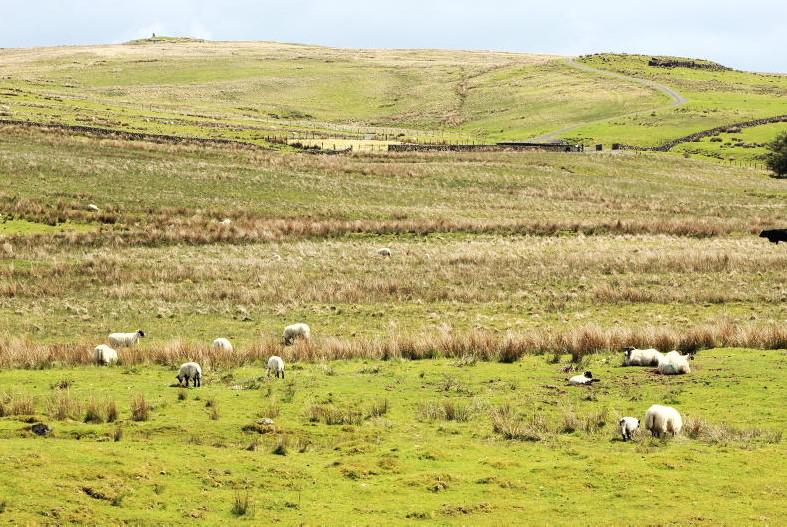
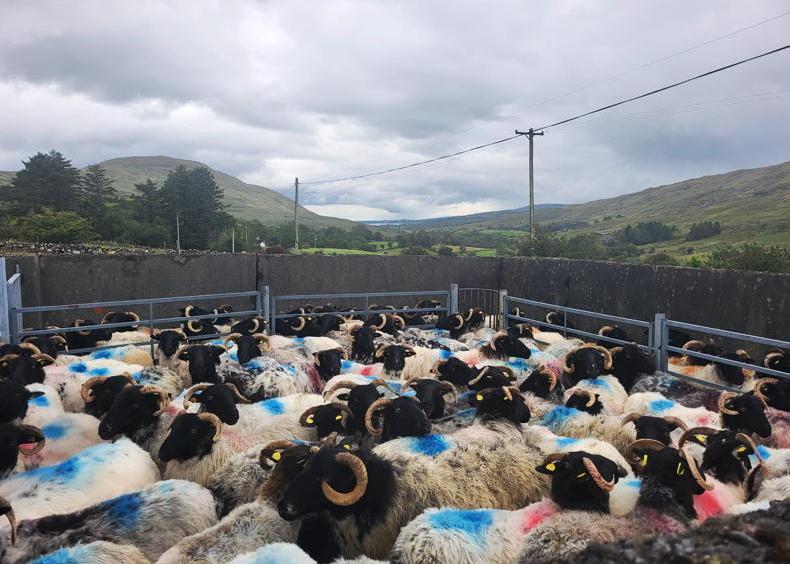

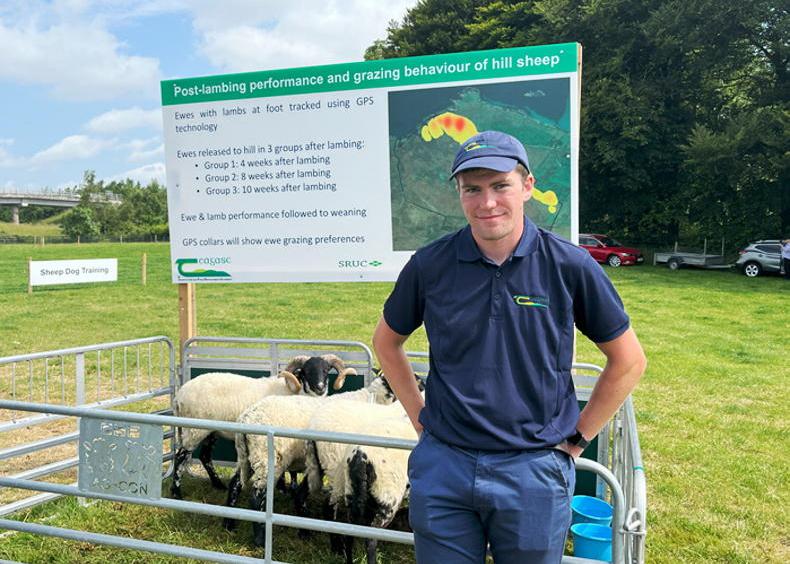
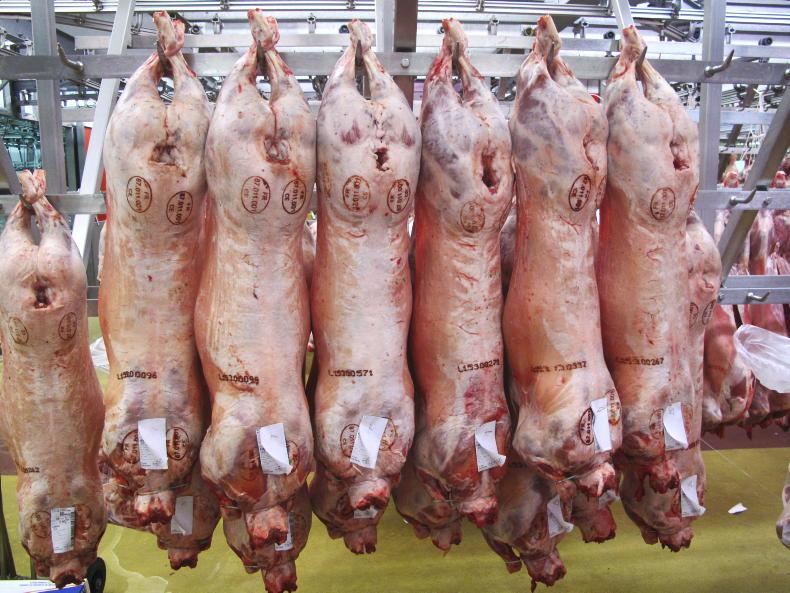

SHARING OPTIONS